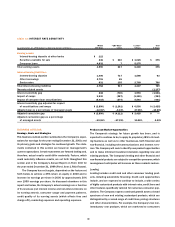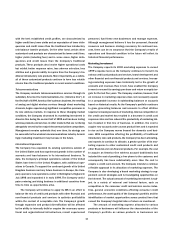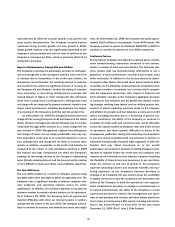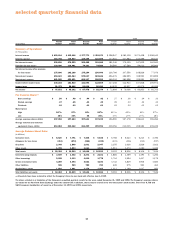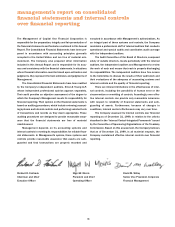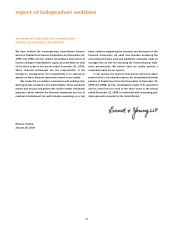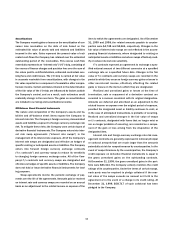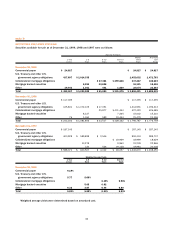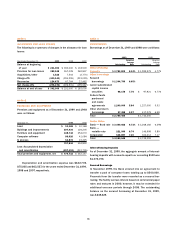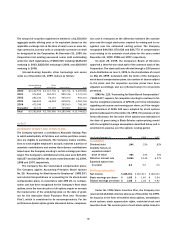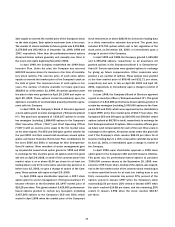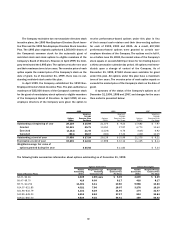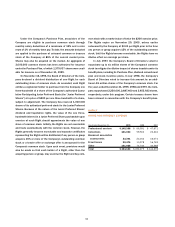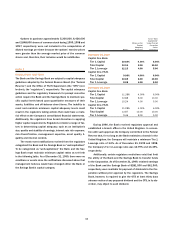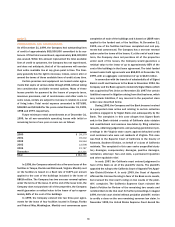Capital One 1999 Annual Report Download - page 52
Download and view the complete annual report
Please find page 52 of the 1999 Capital One annual report below. You can navigate through the pages in the report by either clicking on the pages listed below, or by using the keyword search tool below to find specific information within the annual report.
54
Premises and Equipment
Premises and equipment are stated at cost less accumulated
depreciation and amortization. Depreciation and amortization
expense are computed generally by the straight-line method
over the estimated useful lives of the assets. Useful lives for
premises and equipment are as follows: buildings and
improvements — 5–39 years; furniture and equipment — 3–10
years; computers and software — 3 years.
Marketing
The Company expenses marketing costs as incurred.
Credit Card Fraud Losses
The Company experiences fraud losses from the unauthorized
use of credit cards. Transactions suspected of being fraudulent
are charged to non-interest expense after a sixty-day investiga-
tion period.
Income Taxes
Deferred tax assets and liabilities are determined based on dif-
ferences between the financial reporting and tax bases of assets
and liabilities, and are measured using the enacted tax rates
and laws that will be in effect when the differences are expected
to reverse.
Comprehensive Income
As of December 31, 1999, cumulative other comprehensive
income, net of tax, consisted of $32,608 in net unrealized losses
on securities and $1,346 in foreign currency translation adjust-
ments. As of December 31, 1998 and 1997, cumulative other
comprehensive income, net of tax, consisted of $63,260 and
$2,612 in net unrealized gains on securities and $(2,605) and
$(73) in foreign currency translation adjustments, respectively.
As of December 31, 1999, substantially all of the net unrealized
loss on securities was comprised of gross unrealized losses.
Segments
The Company maintains three distinct business segments: lend-
ing, telecommunications and “other.” The lending segment is
comprised primarily of credit card lending activities. The telecom-
munications segment consists primarily of direct marketing
wireless service. “Other” consists of various non-lending new busi-
ness initiatives, none of which exceed the quantitative thresholds
for reportable segments in Statement of Financial Accounting
Standards (“SFAS”) No. 131, “Disclosures about Segments of
an Enterprise and Related Information” (“SFAS 131”).
The accounting policies of these reportable segments are
the same as those described above. Management measures the
performance of its business segments on a managed basis and
makes resource allocation decisions based upon several fac-
tors, including income before taxes, less indirect expenses.
Lending is the Company’s only reportable business segment,
based on the definitions provided in SFAS 131. Substantially all
of the Company’s reported assets, revenues and income are
derived from the lending segment in all periods presented.
All revenue is generated from external customers and is
predominantly derived in the United States. Revenues and oper-
ating losses from international operations comprised less than
6% and 7% of total managed revenues and operating income,
respectively, for the year ended December 31, 1999.
Recent Accounting Pronouncements
In June 1999, the FASB issued SFAS No. 137, “Accounting for
Derivative Instruments and Hedging Activities — Deferral of the
Effective Date of FASB Statement No. 133” (“SFAS 137”), which
defers the effective date of SFAS No. 133, “Accounting for Deriv-
ative Instruments and Hedging Activities” (together “SFAS 133
as amended”) to all fiscal quarters of all fiscal years beginning
after June 15, 2000. SFAS 133 as amended will require the
Company to recognize all derivatives on the balance sheet at
fair value. Derivatives that are not hedges must be adjusted to
fair value through earnings. If the derivative is a hedge, depend-
ing on the nature of the hedge, changes in the fair value of
derivatives will either be offset against the change in fair value
of the hedged assets, liabilities or firm commitments through
earnings or recognized in other comprehensive income until the
hedged item is recognized in earnings. The ineffective portion of
a derivative’s change in fair value will be immediately recog-
nized in earnings. The adoption of SFAS 133 as amended is not
expected to have a material effect on the results of the Com-
pany’s operations.



